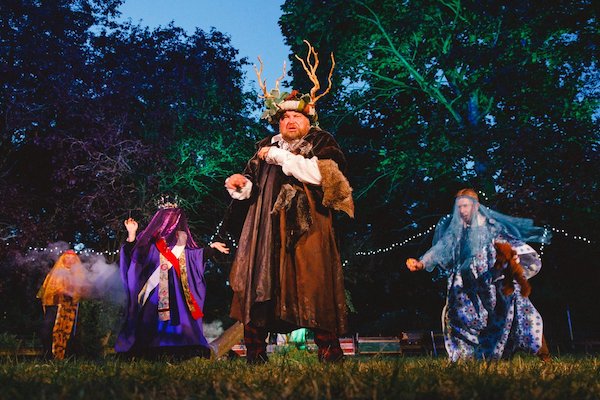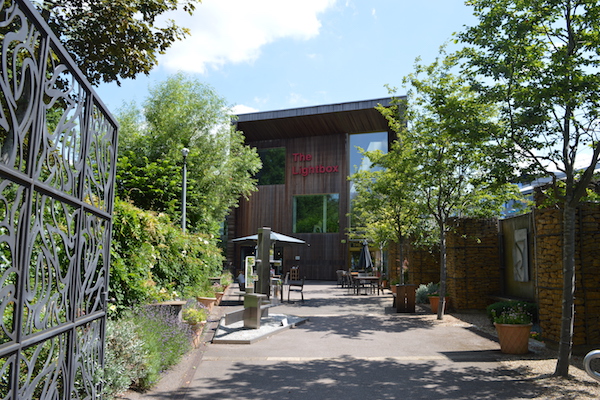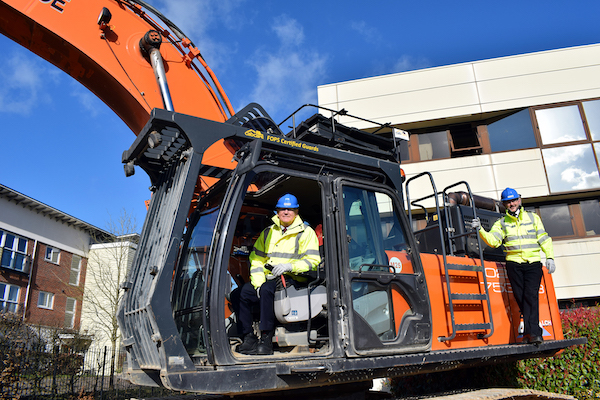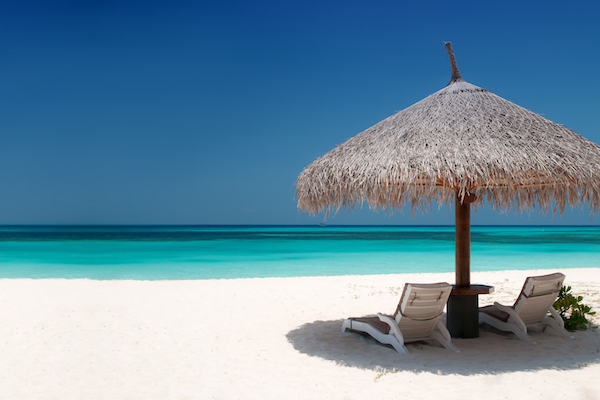
After completing my Master Scuba Instructor training in Miami, the Bahamas was my first port of call. The plan was to dive the world before starting a diving resort development business, and Harbour Island in the Bahamas seemed like an excellent place to start.
Known officially as the Commonwealth of the Bahamas, it is a country within the Lucayan Archipelago of the West Indies. Columbus was the first European to land there in 1492, followed by the Spanish who enslaved the population and then the Brits arrived from Bermuda in 1648. It became a British Crown Colony and gained independence in 1973.
The Bahamas comprises 700 islands and over 2000 rocks and cays sprinkled over 100,000 square miles of ocean. They rightly boast the clearest water on the planet which is a prize for divers. The Bahamians are amongst the friendliest people l have met on my travels and the islands are sublime ‘Robinson Crusoe’ desert islands and the water is clear and warm – a divers paradise.
I made my home on Harbour Island, part of the Eleuthera chain, in the northeast corner. With an elevation of barley a metre, it comprises pink sand beaches, secluded coves and, inland, endless pineapple fields. The architecture is very European as this was the first island the Brits landed on when they arrived making these islands the birthplace of the entire country.
Here are just a few of the hundreds of great dive sites:
CURRENT CUT, ELEUTHERA
The diving ranges from easy, novice dives to some barnstorming expert dives that will leave you breathless. One of the best is right here on Eleuthera, called Current Cut. One of the fastest drift dives l have ever experienced as, jump on the incoming tide, and the water rips through the cut between the two islands. We would drop the divers in at one end, move the boat to the end of the cut and wait. It is in effect the easiest dive as you exert zero energy as you rip along at 15 knots but you do need to know what you are doing. Things come at you fast, and as it is also the nursery ground for the Black Tip Shark, care needs to be taken not to surprise the hell out of them as you barrel through. Baby sharks shooting everywhere, amazing coral and fish life. You just get into position and enjoy the ride. A great dive not to be missed.
TIGER BEACH, GRAND BAHAMA
Move north to Grand Bahama and you find Tiger Beach, specifically West End. Add a 27-mile boat journey to the north of that, and you’ll be at an underwater haven known as Tiger Beach. This area, found on the western edge of the Little Bahamas Bank, has become famous around the world for its healthy population of Tiger sharks, and it’s been rated as one of the best 30-foot (9 m) dives in the world. In an area that supports a variety of shark species, the majestic tiger shark is the undisputed star here, with a backdrop of blue water and a white, sandy bottom. This dive site is not only perfect for avid photographers and videographers, but also for divers who want to add another level of shark experience to their logbook.
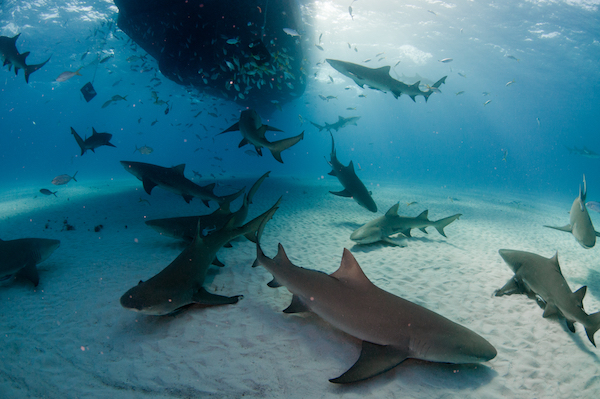
THE CRATER, ANDROS
The largest island in the Bahamas is Andros, just to the north of Eleuthera, and it belongs on every diver’s bucket list due to the abundance of ocean and inland blue holes that can be found here. Some are dived regularly; many others remain unexplored. One of the best is the Crater, an oceanic blue hole off Small Hope Bay. Divers of any level can explore its outer rim and further down into the canyon-like environment until reaching the outer walls of the blue hole and its dark edges, where only those with appropriate certification levels should venture. The Crater is unique even among blue holes because it was once the ocean floor, falling into itself when the ground gave way to erosion, opening up the cave system below. Lots of marine life calls this area home; large turtles sleep on the bottom, and eels and rays swim in and among the coral-covered walls. For more experienced divers, the edges of the wall open up to the dark cave system below.
THE WASHING MACHINE, EXUMAS
Moving from the Bahamas’ largest island to one of the nation’s most beautiful island groups, the Exumas. Made up of 350 cays and ringed by stunning beaches, waterways and reefs, the Exumas are home to the Bahamas National Trust’s Land and Sea Park. Outside the park, in the northern section of the Exuma Cays and just south of Highbourne Cay, is a site known as the Washing Machine. This fun drift dive begins in only about 15 feet (4.5 m) of water, where divers drop down to an insistent current, which picks them up and propels them, head-over- heels, through a narrow cut in the reef — hence the name ‘Washing Machine’. By the time the current releases you, you’re at around 50 feet (15 m), cruising over a beautiful and colourful reef, although a tad dizzy.
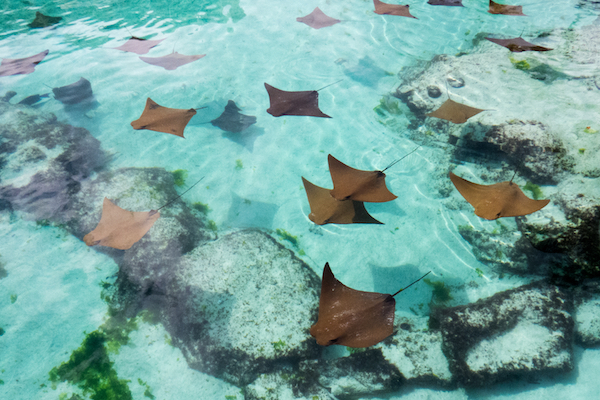
COLUMBUS POINT, CAT ISLAND
On the very southeastern tip of Cat Island is Columbus Point, a remote spot that juts out into the Atlantic Ocean. Because of this exposed position, the diving here tends to be more suited to advanced divers, who are comfortable in deeper waters. Underwater pinnacles come up from the ocean floor all around the point, attracting large grouper and big sharks. Currents can be strong, but when the weather cooperates, the beauty of this underwater world is breathtaking. A large population of Oceanic Whitetips are seasonal residents, and diving with them is another experience for the bucket list. As these sharks are pelagic, dive operators must take their guests out into the open ocean to see them. Here the only things interrupting the deep blue are the occasional large game fish swimming by, along with the oceanics and silky sharks. Columbus Point can be a challenging dive, but when the timing is right, it’s well worth it.
JAMES BOND WRECKS, NASSAU
As the James Bond film, “Spectre,” was shot here, it’s easy to look back on the Bond history in Nassau. Known as the ‘Underwater Hollywood,’ Nassau has played a big part as the backdrop for several Bond films. Diving off the southwestern end of New Providence, divers can experience their own bit of cinematic history by exploring the Vulcan Bomber from the 1965 film Thunderball, and the Tears of Allah shipwreck from the 1983 Bond film Never Say Never Again. Both flicks starred Sean Connery as the suave British agent. Apart from their starring role on the silver screen, these dive sites offer much more to all levels of divers. Found in 40 feet (12 m) of water, the coral growth creates a fantastic opportunity for photographers and videographers. The surrounding reef also supports an abundance of marine life.
THEO’S WRECK
This 80m-long freighter was purposely sunk in 1982, and now rests at 30m on the edge of the oceanic shelf. The vessel is covered in yellow and orange cup corals, large gorgonians and red sponges and over the past three decades a vast array of marine life has moved in: schools of jacks, snappers and grunts are as common as colourful parrotfish and butterflyfish. Divers can enter the engine rooms and cargo holds through various entry points – look out for the resident green moray that inhabits the wreck. Sea turtles, reef sharks and spotted dolphins are known to pay the wreck regular visits.
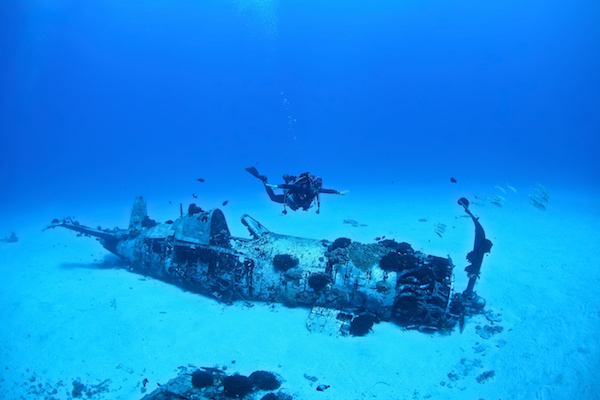
OVER THE WALL
Over-the-wall is a great day dive but you would not want to miss this dive at night. The dive takes you over the ledge of the Bahamas’ greatest wall plummeting to 1,820m into the Tongue of the Ocean. On your descent, all divers switch off their torches. Once your eyes have adjusted to the darkness you will see bioluminescent dinoflagellates light up everywhere. The high concentration of these marine plankton particles produces a special light show that divers will enjoy during their ascent. At 20m the torches are being switched back on and divers have time to explore the wall on their way to the surface.
HAMMERHEAD SHARK FEED
Between January and April, Great Hammerheads aggregate off the shore of Bimini. Close encounters with this usually shy species are almost guaranteed during this time and is one of the best Great Hammerhead dives in the northern hemisphere. The elusive sharks have become accustomed to the regular feeding ritual and once they arrive, they tend to stick around for a few hours, expectantly circling the clear waters of the unnamed dive site. A group of no more than 10 divers is taken on a five-minute boat ride to the shallow dive site to get close and cosy with the 6m long sharks. Although other shark species tend to avoid great hammerheads, bull sharks are occasionally seen during the feed. The dive is specifically designed for underwater photographers and allows for some amazing close-up shots.
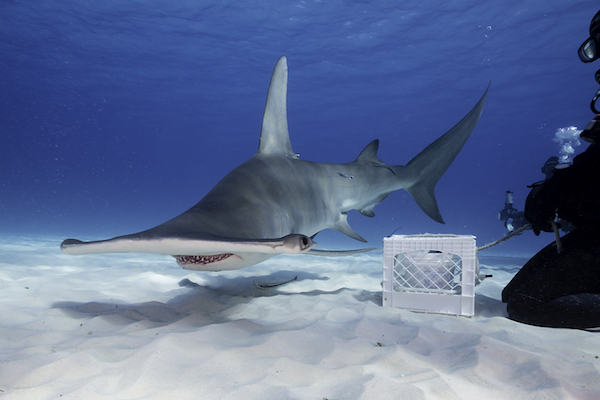
If diving is not for you (are you nuts!) then this is a paradise of beautiful beaches, waving palm trees and great cocktails. The top islands for me are Eleuthera; the Abacos, where you will see swimming wild pigs; Cat Island, which is one of the least visited and remote; Andros, known as the Bonefishing Capital of the World; Long Island, a mecca for fishing, sailing and incredible coral reefs; Harbour Island, known for its pink sand beaches, pastel coloured houses and its romantic vibe; Crooked Island, remote and unspoilt and home to the largest Turtle nesting spot and awesome limestone caves. And there is another 793 to go – you will never get bored and never run out of islands to explore.
If you want mass tourism, waterparks, endless cruise ships and bland American hotels, then Nassau is for you but certainly not for me.
BLOWN AWAY
My life on Harbour Island came to a shattering finale in October 1992, when Hurricane Andrew hit the islands and totally decimated everything, including my dive resort, all boats and my home. Once we got all the tourists off, we were the only eight people left on the entire island and we took refuge in the only concrete home on the assumption we would be safe. We were not.
During the first half of the storm, the north side of the house collapsed and we took shelter in the south end. Then once the calm eye had passed, it reversed and blew in from the south side and the entire house came down, with us trapped in a sunken bathroom in the centre. Once hell had subsided, it took four hours to dig out of the house and apart from cuts and bruises, we were all alive but what met us once we climbed out just took my breath away. Total devastation and a clear view across the island that had never been seen before as all the palm trees had gone and there was absolutely nothing left. We then spent six days drinking water from cisterns and free diving for lobster, waiting for rescue that eventually came in the shape of a British naval frigate that sent a helicopter in to collect us and drop us in Miami. Sadly, this was the first of six hurricanes l have been through but by far the worst, with wind gusts of 201mph. The Bahamas took another massive hit with Hurricane Dorian in 2019 that, again, decimated the islands. The Abaco Islands alone used 200 body bags.
But severe weather is the flip side of the sublime tropics and you just have to learn to live with the trade- off. Rebuild and start again is the mantra - not unlike the world today after the pandemic!
In conclusion, the Bahamas are beautiful islands with friendly, happy people, great diving, great food, great beaches and a rich history. Once bitten by the Bahamas bug, you will never shake it.




